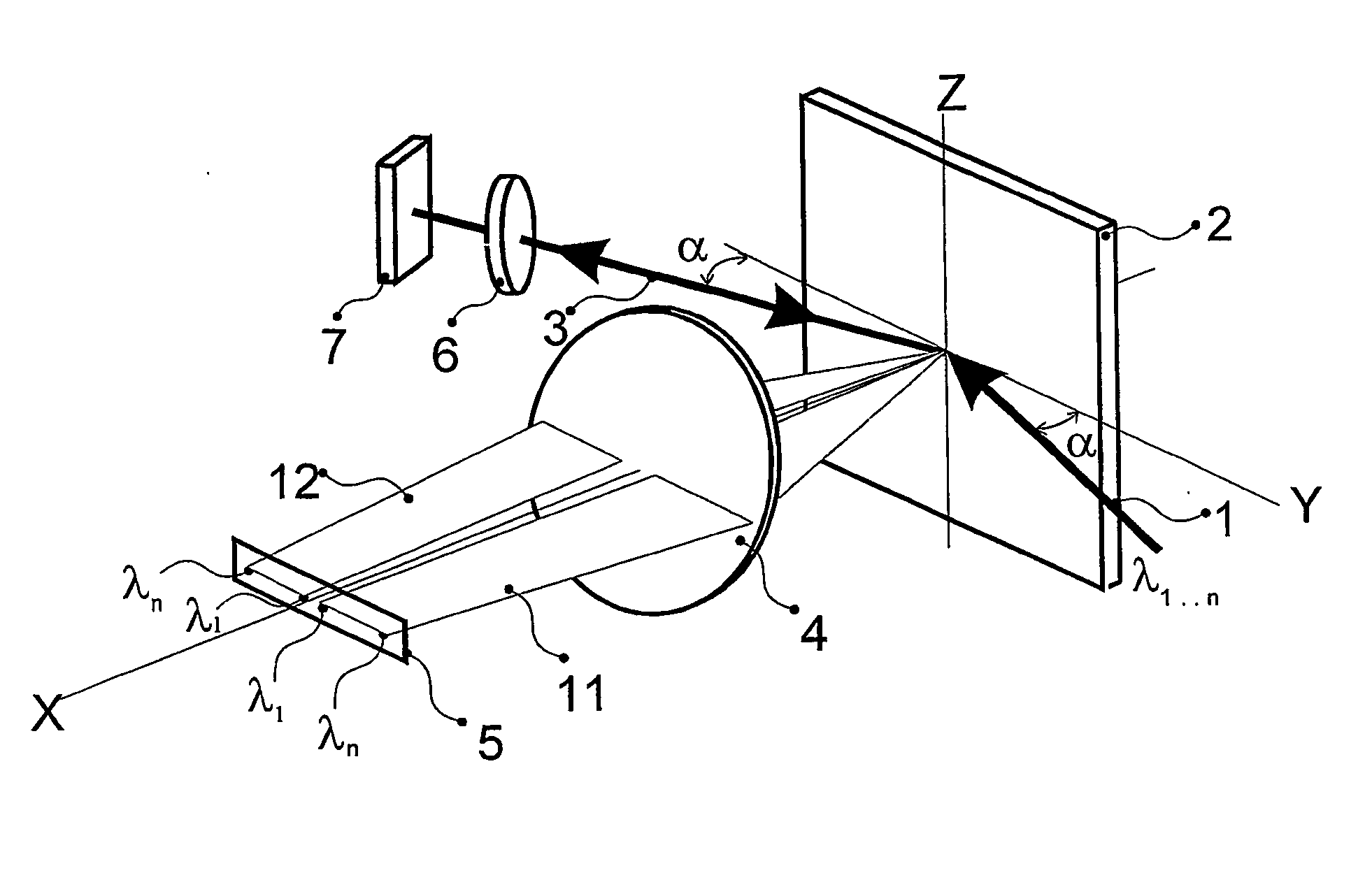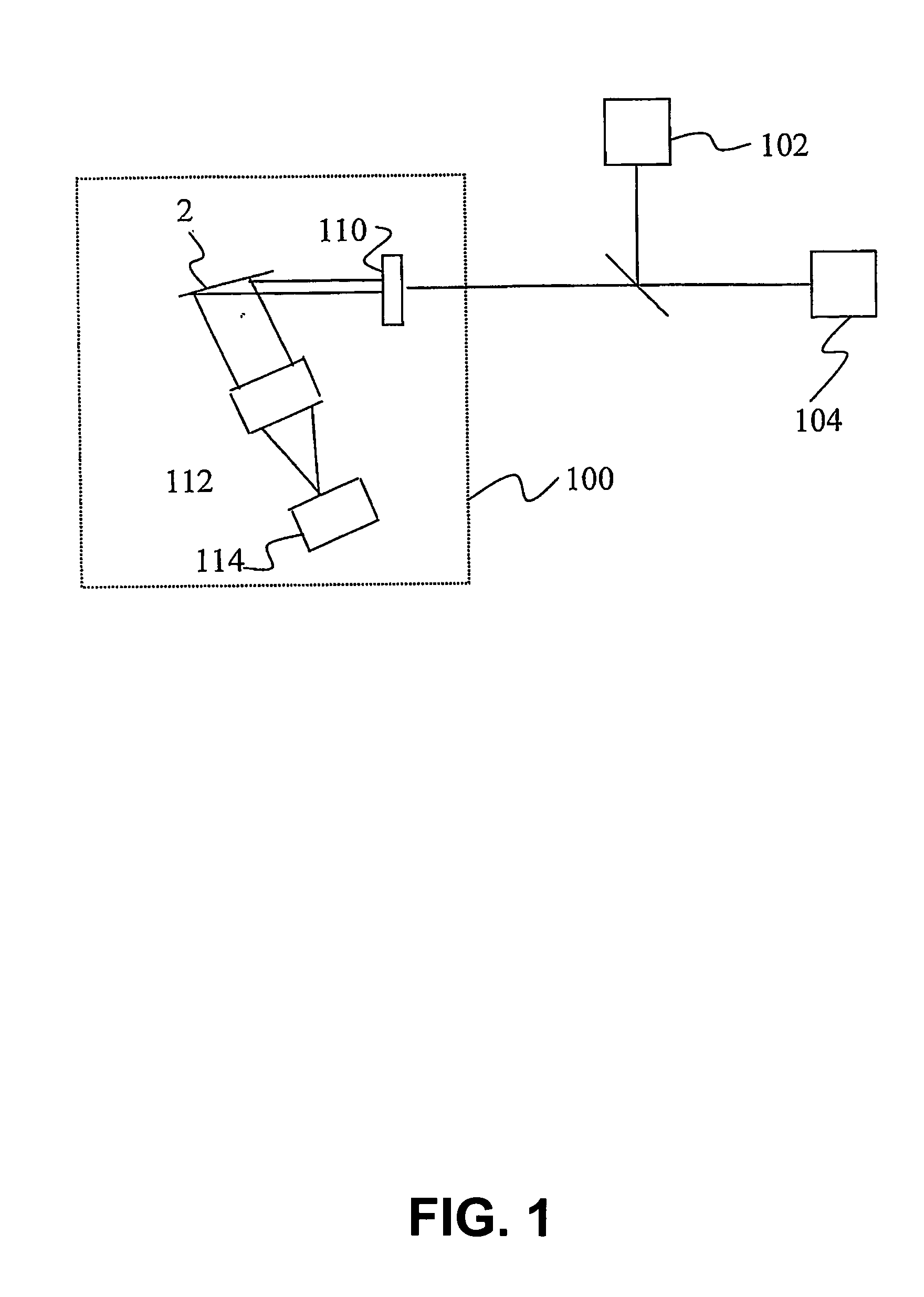Optical spectrometer
a spectrometer and optical technology, applied in the field of optical spectrometers, can solve the problems of low efficiency of diffraction from a grating, diffractive mutual interference, etc., and achieve the effects of reducing efficiency, uniform and reproducible spectral resolution, and minimizing wavelength dependence of spectral resolution
- Summary
- Abstract
- Description
- Claims
- Application Information
AI Technical Summary
Benefits of technology
Problems solved by technology
Method used
Image
Examples
Embodiment Construction
[0032]FIG. 1 schematically shows a spectrometer 100. Spectrometer 100 contains entrance optics 110, a grating 2, detection optics 112 and a detector 114. Spectrometer 100 serves to measure the intensity of light as a function of wavelength. An example of an application of such a spectrometer 100 is in Raman scattering experiments where the wavelength dependence of intensity of inelastically scattered light (scattered light with wavelengths other than the light incident on a specimen) is measured. By way of example, FIG. 1 schematically shows a Raman measurement configuration with a preferably monochromatic light source 102 and a specimen 104. In operation, light source 102 produces light to illuminate specimen 104, which scatters the light. The scattered light is fed to spectrometer 100, which measures the intensity of the scattered light as a function of wavelength (or, equivalently, frequency).
[0033]FIG. 1A shows a reflection grating 2 for use in a spectrometer. The grating has a...
PUM
 Login to View More
Login to View More Abstract
Description
Claims
Application Information
 Login to View More
Login to View More - R&D
- Intellectual Property
- Life Sciences
- Materials
- Tech Scout
- Unparalleled Data Quality
- Higher Quality Content
- 60% Fewer Hallucinations
Browse by: Latest US Patents, China's latest patents, Technical Efficacy Thesaurus, Application Domain, Technology Topic, Popular Technical Reports.
© 2025 PatSnap. All rights reserved.Legal|Privacy policy|Modern Slavery Act Transparency Statement|Sitemap|About US| Contact US: help@patsnap.com



